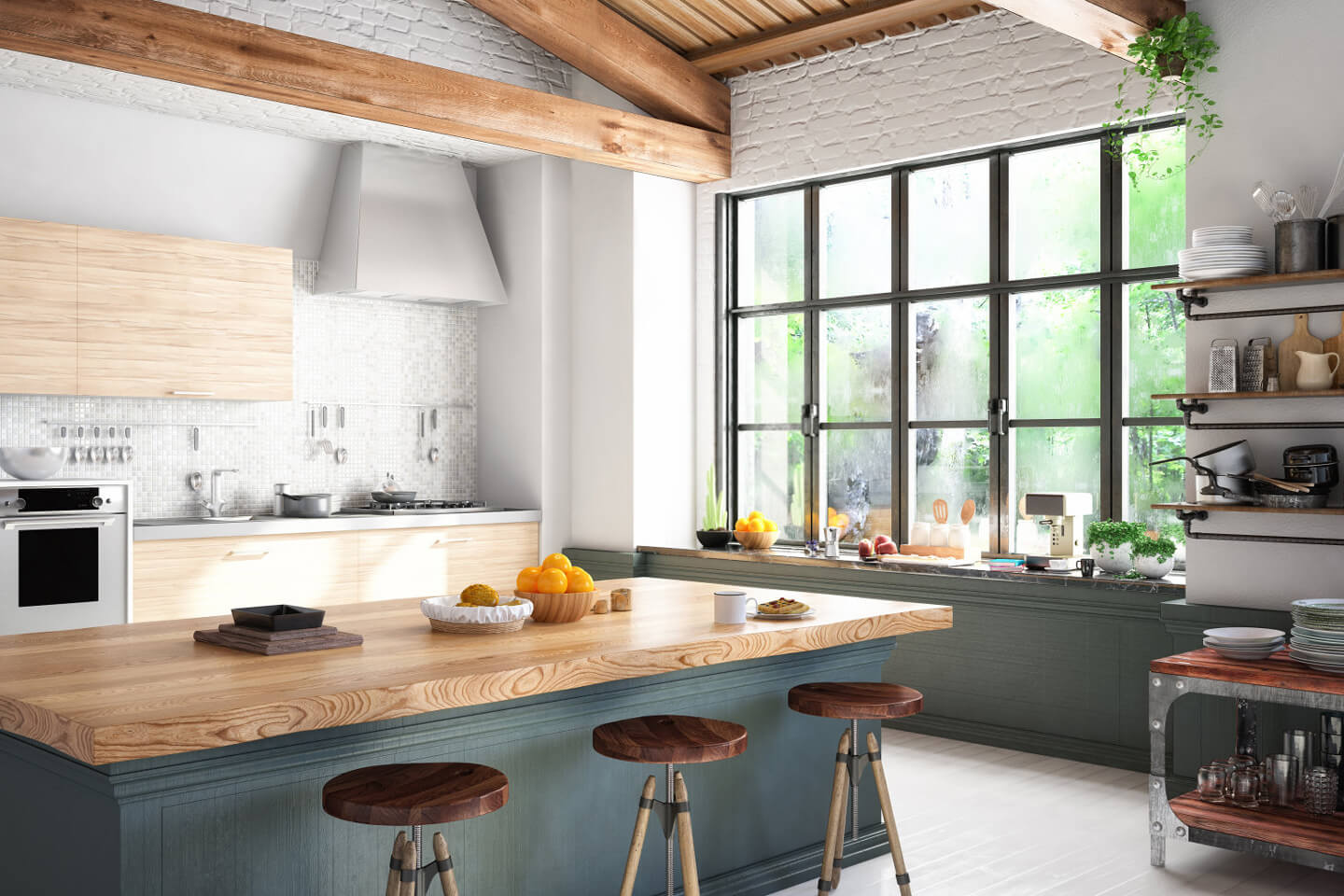Frequently Asked Questions
General
When you are looking for a gas cooktop here are some factors you should consider: the number of burners required, the material of the burners, and features like automatic ignition.
Top-rated gas cooktops come with automatic ignition. When you turn the knob of the gas stove, it ignites the gas in the burner. Also, look for easy control knobs that are comfortable for grip.
Stainless steel surfaces- Clean stainless steel areas by using mild soapy water and a soft cloth. Wipe in the direction of the stainless steel grain when washing and drying. Rinse with water and wipe dry to avoid watermarks. Do not use cleaners that are abrasive or contain chlorine since both are corrosive to stainless steel. For added shine, apply a stainless steel conditioner and wipe off the excess with a soft cloth.
Stainless steel conditioners and cleaners can have negative effects on materials other than stainless steel. Do not apply stainless steel conditioners and cleaners to control labels, logos, black stainless steel, or appliance interiors.
Porcelain surfaces- Immediately wipe up acid spills like fruit juice, milk, and tomatoes with a dry cloth. Do not use a damp sponge or cloth on hot porcelain. When the porcelain is cool, clean it with hot, soapy water and a soft cloth. Rinse and dry. It is normal for porcelain to show fine lines with age due to exposure to heat and food.Painted surfaces- Wash with hot, soapy water and a soft cloth. Rinse and dry. Do not use powdered cleaners, steel wool pads, oven cleaners, and other abrasive cleaning materials.
Burner caps- Wash the burner caps with hot, soapy water and a soft cloth. Do not soak the burner caps. Rinse and then dry thoroughly. Nonabrasive cleaners and liquid cleaners may also be used.
Burner bases- Make sure the cooktop has cooled completely before cleaning the burner bases. Clean the burner bases with hot water, mild detergent, and a soft cloth. Use a stiff nylon toothbrush to clean the port openings and do not scratch or gouge them. Rinse and dry thoroughly.
Gas igniters- After the igniters have cooled down, carefully wipe the igniters with a cotton swab dampened with water. Gently scrape the soil off with a toothpick. Avoid exposing the igniters to excessive water, as a damp igniter may not light up. Remove any lint that may remain after cleaning.
Power Rate of the Cooktop
The first point that you need to consider when looking for an induction cooktop is the power rate. A higher power rate ensures faster cooking, though it may also cost more. Most of the induction cooktops rate between 1000-2000W. So, if you need something that helps you cook faster, you need to opt for an induction cooktop with a higher power rate.
Pre-set Menu
For the convenience of the users, some of the latest induction cooktops come with a pre-set menu. Depending on the dish that you cook, the pre-set menu adjusts the temperature of the appliance. So, whether you are boiling milk, making rice, roti and frying vegetables, the induction cooktop adjusts the temperature accordingly so that you get perfectly cooked dishes with a single touch.
Safety Features
This is another important factor to consider when looking for an induction cooktop. Modern induction cooktops such as the one from KENT comes with an auto-pan detection feature, which ensures heating is turned-off as soon as you remove the cookware from the cooktop. In addition, if you forget to switch off the appliance, the cooktop will automatically switch off if the pan is too hot.
Pan Size of the Cooktop
Every induction cooktop comes with a minimum and maximum pan size. If the cookware is smaller than the supported pan size, the cooktop will not detect the pan and won’t start heating the pot. The size of the cookware needs to match the coil size of the induction cooktop for maximum efficiency.
Portability of the Cooktop
Depending on the preference of the users, they can choose from portable or fixed cooktops. A portable induction cooktop makes it convenient for the user to take the appliance anywhere they want. Whether you are planning to cook on your rooftop or backyard, a portable cooktop makes it easy to carry the appliance anywhere.
Customer Service
You can contact our customer service if you have some questions on your orders.
Here is our customer service email: support@gaslandchef.com
Once your order ships out, you will receive an email with your tracking number(s). Please search the tracking provided on the corresponding shipping carrier website to view the estimated day of delivery.
Shipping
We try our best to ship your order the day you have ordered on normal business days.
Shipping Time: Standard shipping: 3-6 business days. LTL shipping: 8-10 natural days.
Express shipping: 1-4 Days
We do! You will have the option to select express shipping at checkout at an additional cost.
Sometimes it can take up to 72 hours for tracking updates to appear after an order has shipped. If 72 hours have passed and you still do not see tracking updates, it's possible our system assigned the incorrect carrier link to your tracking number. Just write to us at service@gaslandchef.com if it happens.
Range Hoods
Step 1: Decide the style of your cooker hood:wall mount or under cabinet.
Step 2: Measure the width of the location where you plan to install the cooker hood. And then, use the measurement to choose the appropriate cooker hood.
Step 3:Determine whether you need a chimney or not. Most cooker hood installations require a distance of 660mm to 740mm between the bottom of the hood and the cooking surface. To determine if you need chimneys or not, simply measure the distance from the cooking surface to the ceiling and then minus the 650mm to 750mm distance, and subtract the height of the hood itself. That is the distance in which you 'll need to install chimneys.
Ventless or ductless cooker hoods are especially useful for kitchens that do not have ventilations. They are designed with carbon filters that re-circulate the air, hence improving indoor air quality.
Replace the filter in 2-4 month.
Dishwasher washable, clean it in every 3-7 days with mild detergent. The cleaning time period can be adjusted according to the actual usage.
Cleaning the aluminum grease filters:
The best way to clean the aluminum grease filter is to soak them in warm water with washing-up liquid and soak them. A dish brush is suitable for cleaning. Alternatively, you can clean the grease filters in the dishwasher. Depending on the cleaning agent, the metal filters can turn dark. This is normal and not a reason for complaint.
Rattling noises or vibrations:
Please check all small parts are properly connected and no other objects or the power cable are touching the fan wheel. Basically, if the cross-section of the exhaust air line is too small, the motor will turn a little faster because it cannot remove as much air. The engine will then start to hum and vibrate.Note: An extractor hood will only run quietly and with little vibration if the exhaust air duct is properly laid.
Insufficient suction:
In addition to the air exhaust duct pipe, it is particularly important in modern houses that there is a sufficient supply of air. If no air comes in, it cannot be conveyed outside.
Rust stains on stainless steel surfaces can occur if the wrong cleaning agents are used. When cleaning with vinegar cleaner, there may be problems with rust formation. These rust stains can be easily removed with a stainless steel cleaner in the initial stage. Please do not use any vinegar-based cleaning agents. Stains on stainless steel - looks like discolored: Please use a stainless steel cleaner.
That is a protective film. Our extractor hoods are protected from shipping damage with an adhesive film. If you remove them, glue residue may be left behind. The best thing to do is to remove this by your hair dryer using hot air. Scratches on the shaft of the hood in the region around the logo. Scratches on the shaft of the hood around the logo are usually only glue residues that can be easily removed with cleaning agents.
Induction Cooktops
Glass-ceramic is a heat-resistant glass that does not expand and is extremely tough. If dark and dull spots form on the glass over time after cooking, this is not a defect in the glass, but a film of dirt that can be removed with a glass-ceramic cleaner.
As a rule, scratches on the glass are not caused by the metal of the bottom of the pot, but by dirt particles that stick to the bottom of the pot, e.g. when the pot is in the sink while potatoes are being peeled and the pot is then placed on the Cooktop with sand residues. The sand can contain particles that leave scratches on the hob when the peeled pulled over the glass-ceramic.
Induction hobs only work properly if they detect a sufficient amount of magnetic mass on the bottom of the pan. There are many "induction-grade" pots out there. Often, however, only a thin metal plate is glued to the bottom of the pot. It can therefore happen that pots are not recognized or the hob does not activate full power because not enough magnetic mass is detected.
If the induction hob switches itself off during cooking, there may be insufficient ventilation. In addition, the running noise of the fans increases because the induction coils have to be cooled. and the hob will be switch off automatically while it's overheating.





